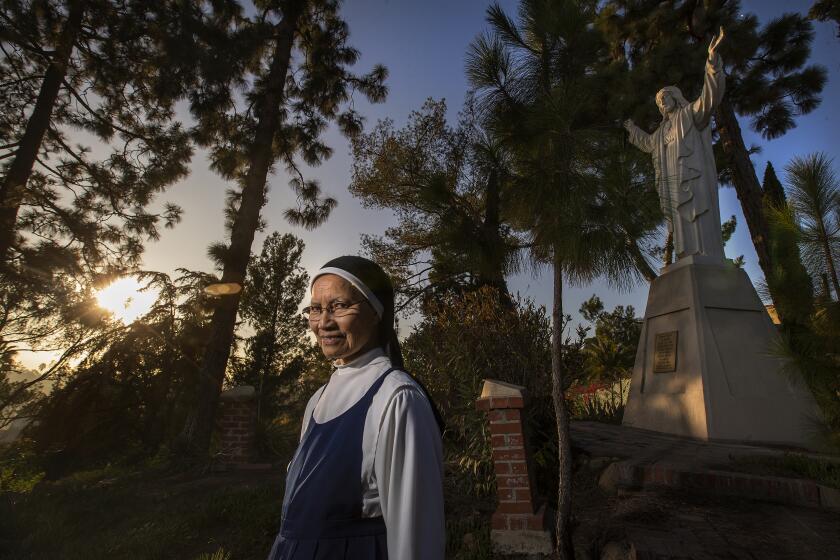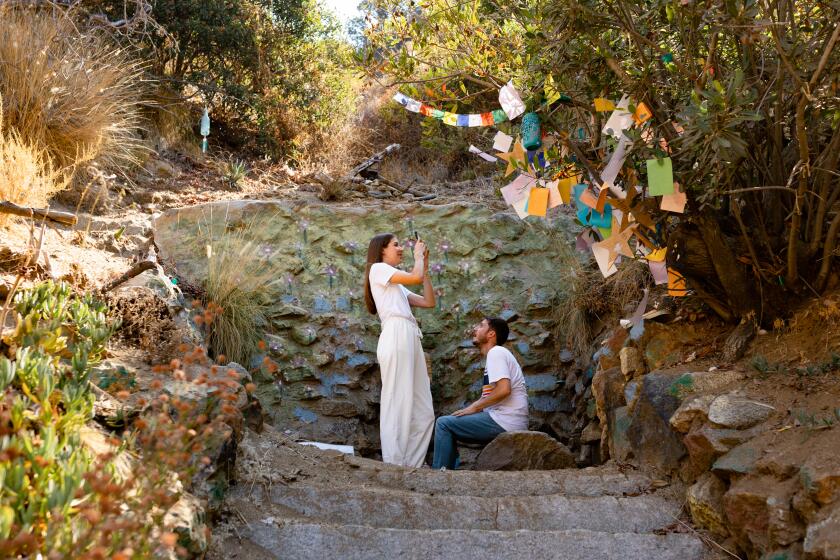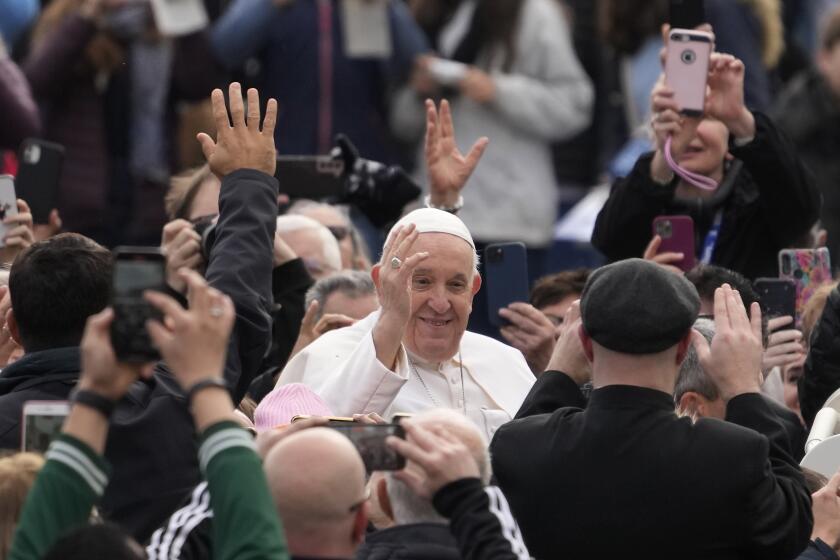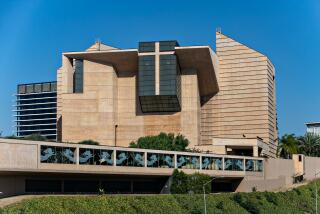What’s next for Hollywood’s hidden Monastery of the Angels?
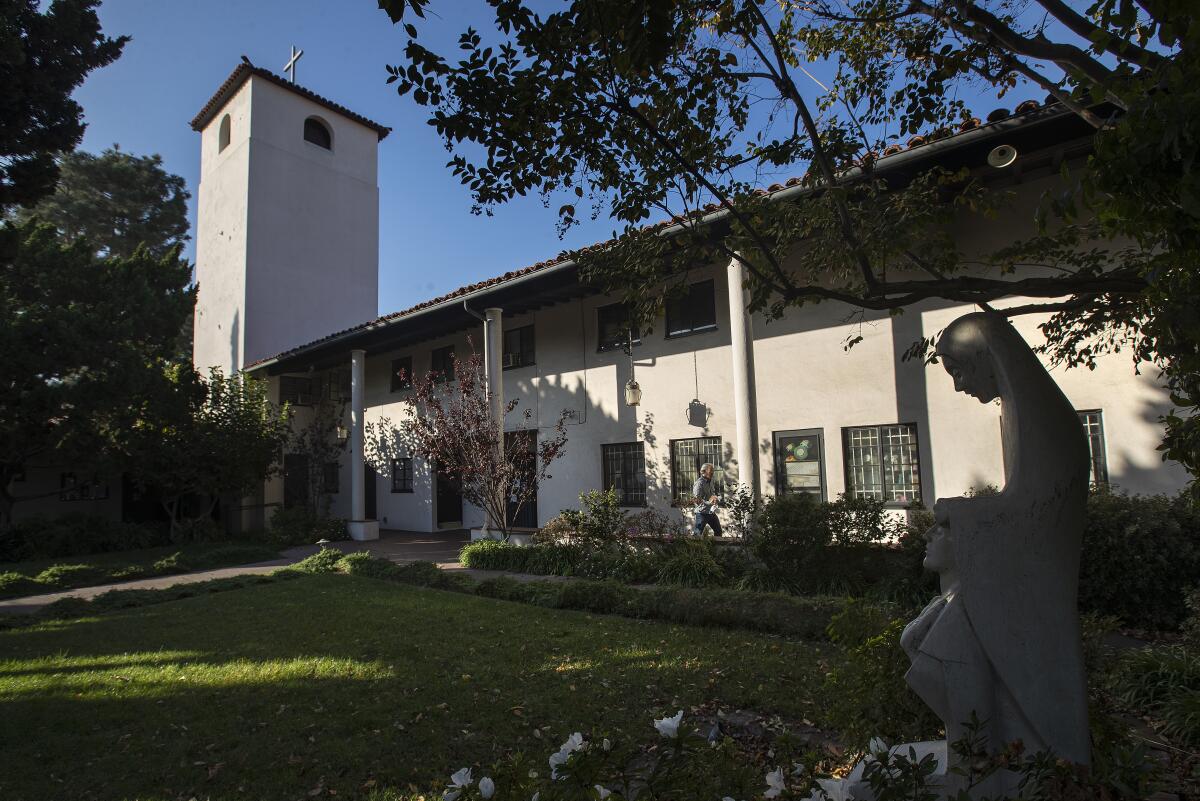
- Share via
For 90 years the Monastery of the Angels was home to a cloistered community of Dominican nuns who lived, prayed and baked their famous pumpkin bread on the rambling four-acre property tucked into a hillside in the heart of Hollywood.
But in recent years the number of nuns living on the property fell from a high of 45 to fewer than six, part of a trend playing out in religious institutions across the country, as religious orders and congregations shrink. When the last few sisters were relocated in the fall of 2022, neighbors and supporters of the monastery grew concerned for the future of the property many had come to see as a spiritual oasis.
Now, in what some say is a modern miracle, it appears the Monastery of the Angels may be preserved after all. The Dominican Friars of the Western Province announced they have teamed up with the Dominican nuns to seek proposals to restore the monastery and leave the chapel and pumpkin bread business intact.
Friends of the Monastery of the Angels in Hollywood fear that the 98-year-old convent is about to go up for sale.
“Our sisters loved the Hollywood Hills community, and we look forward to working with the friars, interested parties, and the neighborhood to ensure our beloved monastery can continue to be a blessing to all,” Sister Maria Christine Behlow, the former prioress of the monastery, said in a statement.
The request for proposals will be released in early April.
“We want to be open to every creative and interesting idea out there and do our due diligence to evaluate every possible angle in saving the monastery,” said Chris Hanzeli, head of strategic initiatives for the Dominican Friars of the Western Province. “We are united with the community to protect the treasure of the monastery for generations to come.”
The friars and nuns cannot predict what proposals will come their way, Hanzeli said, but they are committed to preserving the chapel as a sacred space for the community, preserving the pumpkin bread and candy-making business, and protecting the broader property for the neighborhood so “it can continue to be a blessing for everyone.”
The Dominican order will not sell Monastery of the Angels — for now.
To oversee this process, the Dominicans are working with Dominic Dutra, a real estate agent based in Fremont who has devoted the last 15 years to helping religious communities across California utilize their properties in creative ways.
“Faith-based organizations have been declining in terms of their numbers, and now have a lot of surplus or underutilized land,” Dutra said. Instead of selling their properties to the highest bidder, many of these organizations want to ensure that their land continues to serve the greater community.
“For people of faith, we look at it as we want to give God the opportunity to interject and show us that miracles still can happen,” said Dutra, who is Christian. “That’s really the priority here — to interject some hope and a positive perspective back into the world.”
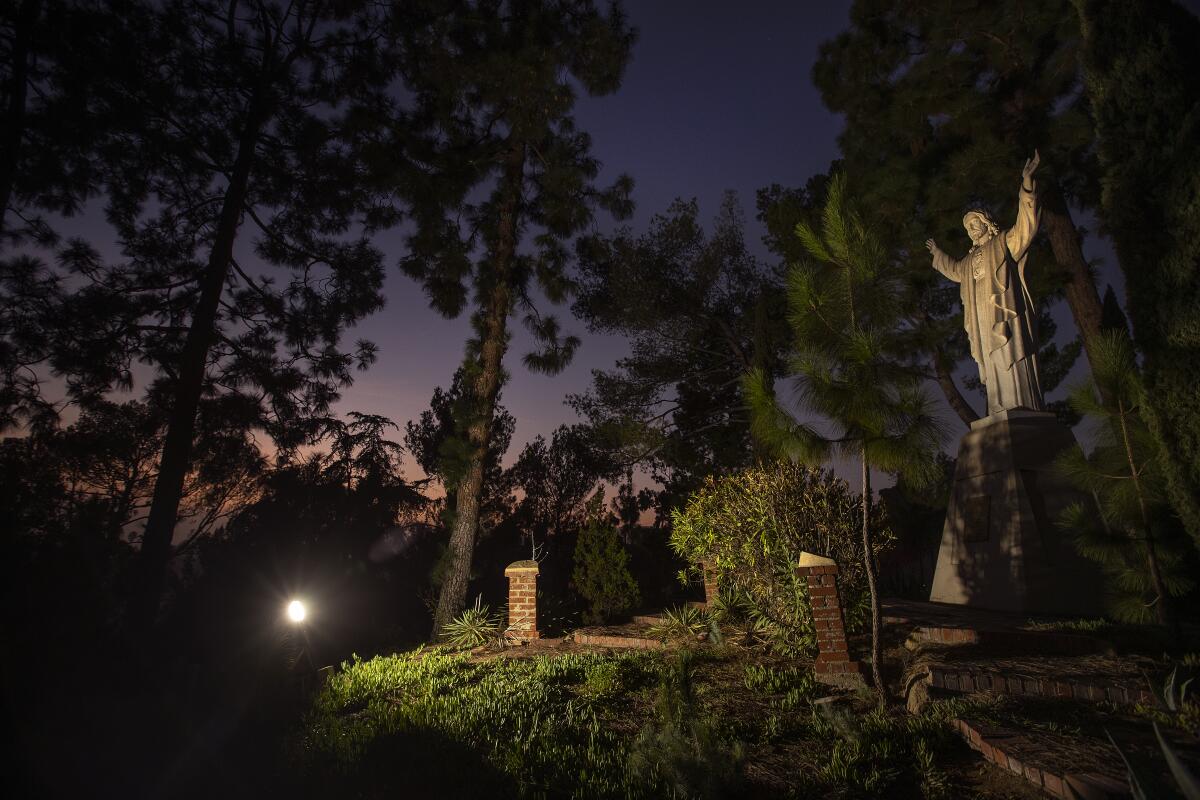
The Monastery of the Angels was founded in 1924 and was supported in its early days by some of L.A.’s wealthiest families, including the Dohenys, the Dockweilers, the Van de Kamps and the Hancocks.
In 1934, the order moved to a sprawling Hollywood estate that had belonged to copper mine owner Joseph Giroux, which it bought for just $10. Fourteen years later, Catholic women in Los Angeles raised funds to build the sisters a new cloister, chapel and office complex on the same site, designed by celebrated architect Wallace Neff.
Since then the monastery has served as a spiritual refuge for people of all faiths.
“Whenever we take people on that property, we see how they slow down and have peace and feel welcome,” said Kim Cooper, a cultural historian who has led tour groups to the monastery. “L.A. is a giant pool and the water is cold and deep. There are a few reefs to land on, and the Monastery of the Angels is one of them.”
Feeling sad or hopeless ? These 12 beautiful places in Los Angeles will lift your spirits.
Along with her husband, Richard Schave, Cooper is one of the founders of The Monastery of the Angels Foundation. The group, which has no affiliation with the monastery or the Dominicans, was formed in January 2022 to ensure the monastery remained a sacred space in Los Angeles, including raising enough funds to buy it if necessary. Now, its members hope to submit a proposal for the property themselves.
“Hollywood was founded as a city of gardens and churches,” Schave said. “Now we have an opportunity to go back to the roots of Hollywood.”
Dutra said there probably will be a deadline of 90 to 120 days after the RFP is released for individuals and organizations to submit their qualifications and ideas. Ideally, the friars and sisters will be able to determine which direction they want to go over the next six months. However, if they need more time, they will take it.
“We want to make sure we do this right,” he said.
The property is owned by the Monastery of the Angels, but Dutra said it will also consult with the Archdiocese of Los Angeles, the Vatican, neighborhood members and others as part of the decision making process.
Pope Francis, whose leadership of the Roman Catholic Church has resonated with many Californians, celebrates his 10th anniversary as pope on March 13.
But he had one warning: Not everyone will get what they want.
“Of course there will be push and pull — we have to meet the long-term interests of the sisters because they are getting older and will have senior care requirements,” he said, “but we want to be as transparent and respectful of everyone’s interests as possible.”
Establishing a new long-term plan for the monastery is likely to be a multi-year process. A similar project that Dutra worked on with the Sisters of the Holy Family in the Bay Area took seven years from start to finish, but the result was worth the wait. The sisters’ 15-acre property was converted to a 5.5-acre open space park that is now part of the national conservancy, while also creating 47 new housing units for the sisters.
“The church is at a tipping point with this diminution in size, and it’s easy for some people to get caught up in it and think, ‘Oh, this is the end,’ ” Dutra said. “But actually, if you think about the resurrection story, that wasn’t the end.”
Dutra believes that, as the real estate needs of religious institutions change, there is an opportunity for them to reconnect with the outer world and demonstrate that they are sensitive to those needs as well.
“We are hopeful that in the midst of cynicism and divisiveness we can show that there really is more to life than winning and losing and making money,” he said.
More to Read
Sign up for Essential California
The most important California stories and recommendations in your inbox every morning.
You may occasionally receive promotional content from the Los Angeles Times.
